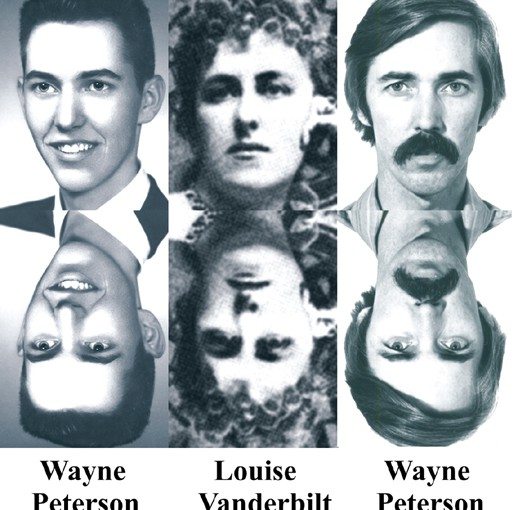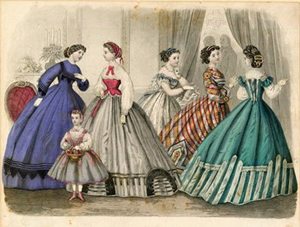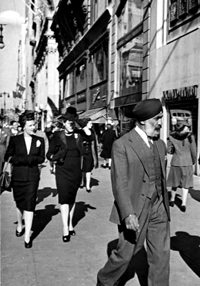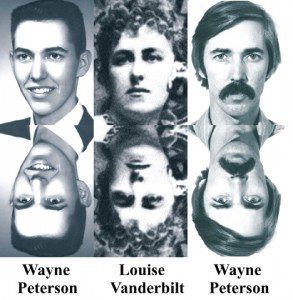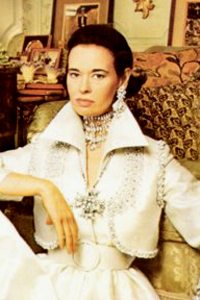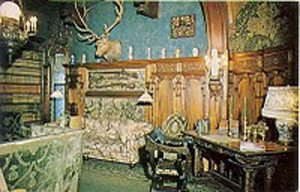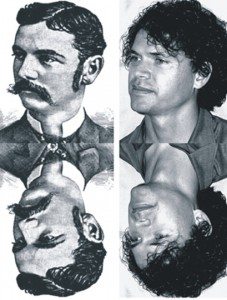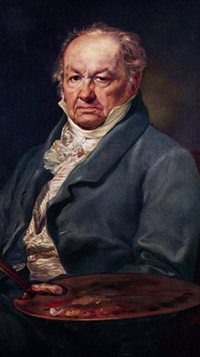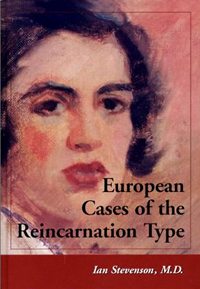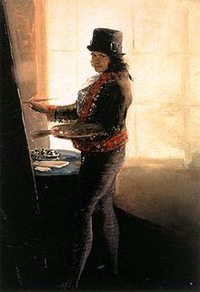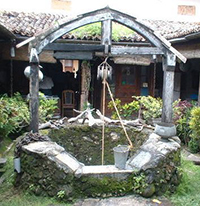 How Derived: Past Life Memories in Childhood
How Derived: Past Life Memories in Childhood
Researched by: Ian Stevenson, MD and Francis story
Article by: Walter Semkiw, MD
The Life of Karunasena
GG Karunasena was born on March 4, 1952 in the small Sri Lankan town of Aluthwala. His father, who was bald, was GG Punchi Singho and his mother was DW Punchi Nona. In contrast to many natives of Sri Lanka, both parents were fair-skinned. Karunasena had two older brothers, Dhanasiri and Upasena. He had a younger brother named Nandasena, who Karunasena was very fond of. The family’s nickname for Karunasena was Kira.
The family were farmers, who owned a rubber tree plantation and coconut groves. They also grew vegetables in cordoned off plots, which could spark arguments with neighbors regarding whose land it was to cultivate. Karunasena’s father also drove trucks and buses for income. In 1957, GG Punchi Singho suffered a stroke, was bedridden for two years, then recovered to the extent that he could walk, though with a cane and a limp.
Karunasena liked to be clean and well dressed. His hobbies included dancing, drumming and flying kites. He had a rather avid interest in Buddhism.
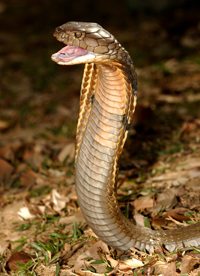 One dramatic event that occurred in the family’s life was when two cobras made their way into the Singho home. One snake was killed and the other one was burned.
One dramatic event that occurred in the family’s life was when two cobras made their way into the Singho home. One snake was killed and the other one was burned.
Karunasena enjoyed gardening and was noted to exert himself vigorously on the family’s agricultural land. When he was seven years old, Karunasena returned from working in the fields, went to the family’s well to wash himself and then fell in and drowned. One of Karunasena’s brothers retrieved his body and held him. The family discussed whether to take Karunesna to the hospital, but it was determined that Karunesena was dead and that there was no point in seeking medical attention. Karunasena’s death occurred on July 18, 1959. He was buried in the grounds of the family’s rubber plantation.
Ruby Silva, the Reincarnation of Kurunasena, is Born
Ruby Kusuma Silva was born on September 12, 1962 in the Sri Lankan city of Galle, about three years after the death of Karunasena. Her father was WK Simon Silva and her mother was Somie Nona Jayasekera. At the time that Ruby was born, her parents had seven children, six boys and one girl. The family lived in the town of Batapola, which lies halfway between the cities of Galle and Colombo. When Ruby was two years old, the family relocated to the village of Pollewa that was 1.5 kilometers or about a mile from Batapola.
Ruby started to speak when she was less than 1 ½ years old and began to talk about a previous life when she was still under two years old. She said that in her previous life she had been a “brother” and not a “sister.” Rudy stated she wanted to be called a “brother” or “son” and not a “sister” or “daughter.”
 When Ruby first spoke about her past life she did not seem to have adequate vocabulary to express herself. At one point, when she was trying to relate that cobras had invaded her past life family’s home and that one snake was burned and another killed, she used childish words. Her father, Simon, related that he had to translate her baby words into adult terms. When she wanted to convey that her past life father was a bus driver, she knew the word for bus but not for driver, so she communicated this by making motions of a person steering a vehicle.
When Ruby first spoke about her past life she did not seem to have adequate vocabulary to express herself. At one point, when she was trying to relate that cobras had invaded her past life family’s home and that one snake was burned and another killed, she used childish words. Her father, Simon, related that he had to translate her baby words into adult terms. When she wanted to convey that her past life father was a bus driver, she knew the word for bus but not for driver, so she communicated this by making motions of a person steering a vehicle.
Rudy seemed to perplexed that she was a girl and would say “why did I become a girl?” She also said “I am big” and said that she could do the work of a big person. When her mother asked why she had come to them, Ruby replied, “I was beaten by the other mother.”
Ruby said that her parents were fair-skinned and that her father was bald and lame. Rudy said that she lived in a town called Aluthwala and that she attended religious Sunday school at the temple there. She implied that her current parents were not her real parents, as she stated that her mother and father were in Aluthwala.
 Regarding her past life death, Ruby said that she had been working in the paddy fields, went to the well to wash and then slipped into the well and drowned. She also said that she had injured her leg in doing so and had bled, pointing to the right leg just below the knee. She said that one of her brothers said, “Let us take him to the hospital,” while the other brother said “He is dead.” She said that her mother was there and crying when she died. Ruby’s description was true regarding the death of Karunasena.
Regarding her past life death, Ruby said that she had been working in the paddy fields, went to the well to wash and then slipped into the well and drowned. She also said that she had injured her leg in doing so and had bled, pointing to the right leg just below the knee. She said that one of her brothers said, “Let us take him to the hospital,” while the other brother said “He is dead.” She said that her mother was there and crying when she died. Ruby’s description was true regarding the death of Karunasena.
Ruby would talk as if she was still living her past life, speaking in the present tense. For example, she made the statements:
“there are piles of coconuts at my house”
“buses pass along the road by my house”
“the coconuts are brought by carts and lorries” (lorries are a term used in Sri Lanka for trucks)
“if you do not have coconuts here, we can get them at Aluthwala”
All these statements were correct for the life of Karunasena. Ian Stevenson noted Ruby talked as if she was “on leave” from her past life in Aluthwala.
Stevenson noted that Ruby’s remarks were often stimulated by an activity of a family member which would lead her to say, “I used to do that.” For example, when she saw her mother cutting vegetables, she reported that in her past life neighbors would argue with her family over fences separating their vegetable patches. Ruby noted that her past life family was much better off financially than her current family.
Ruby Remembers her Past Life Name and Nick Name
 Ruby said that at school she was known as Karunasena, but that at home she was called Kira. She said that she had two older brothers and one younger brother. Ruby noted that her older brother and she would go to Sunday school together. She said that on the way to her past life home one comes to a culvert and then a junction. Her past life home, she related, was tiled and that the walls were color washed. Further, they had many coconuts at her past life home, which was in contrast to her contemporary home, where they had very few coconuts. Ruby related that her older brother would climb trees to bring down coconuts, which they would cut and drink water from. She said that her past life father would bring mangoes from a shop, as they did not have mango trees at their home. Ruby also stated that the family had a rubber plantation, though her past life mother would not allow her to go there. All these statements were correct for the life of Karunasena.
Ruby said that at school she was known as Karunasena, but that at home she was called Kira. She said that she had two older brothers and one younger brother. Ruby noted that her older brother and she would go to Sunday school together. She said that on the way to her past life home one comes to a culvert and then a junction. Her past life home, she related, was tiled and that the walls were color washed. Further, they had many coconuts at her past life home, which was in contrast to her contemporary home, where they had very few coconuts. Ruby related that her older brother would climb trees to bring down coconuts, which they would cut and drink water from. She said that her past life father would bring mangoes from a shop, as they did not have mango trees at their home. Ruby also stated that the family had a rubber plantation, though her past life mother would not allow her to go there. All these statements were correct for the life of Karunasena.
Ruby said that at the temple in Aluthwala, she saw a belly tree. Ruby said that she visited Kataragama, which is a well-known religious center in southern Sri Lanka. She correctly stated that at this center, there were big crowds, a bo tree and a temple. She also said that she had been to Galle and to another Sri Lankan city, Dodanduwa. These remarks were true for the life of Karunasena.
Ruby said that her aunts once washed a burnt part of a machine in a well. In actuality, the Singho family owned looms and one of Karunasena’s aunts had washed a part of a loom machinery that had become blackened with soot from an oil lamp. Karunasena had helped this aunt in cleaning of this machine.
Ruby’s Past Life Identity is Discovered
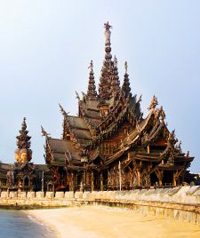 Ruby’s mother, Somie, traveled to Aluthwala in March 1966 and went to the Nandaramaya Temple inquiring whether there was a boy who fitted Ruby’s description of her past life.
Ruby’s mother, Somie, traveled to Aluthwala in March 1966 and went to the Nandaramaya Temple inquiring whether there was a boy who fitted Ruby’s description of her past life.
After some investigation, Somie was referred to the Singho family. It became clear that Ruby’s memories matched the life of Karunasena. Due to the inquiries that were made, the Singho family heard about Ruby and her past life memories. They went to visit Ruby in Pollewa in April 1966. Aluthwala, where the Singho family lived, is about 14 kilometers or 8 miles from Pollewa. Ian Stevenson, MD, noted that the two families had no prior contact or knowledge of each other before they met.
Ruby Identifies her Past Life Family Members by Name
In April 1966 multiple family members of the Singho family came to visit Ruby and she recognized them on sight and identified all of them by name. These included:
GG Punchi Singho, the father of Karunasena: Specifically, when Ruby saw a man who was a stranger to the family approaching the house she said, “Here comes my father.” Ruby went to him and sat on his lap.
DW Punchi Nona, Karunasena’s mother
Dhanasiri, Karunasena’s older brother
Nandasena, the younger brother of Karunasena
JG Mary Nona, Karunasena’s aunt: No one in the Silva family knew who she was but when Ruby met her, Ruby was very friendly and even affectionate. Her father asked, “Who is she?” Ruby replied, “That is my aunt.”
Karunasena’s maternal uncle: When he came to the Silva house, he asked Ruby, “Who am I?” She replied “You are my uncle.”
Ian Stevenson noted that these identifications were especially impressive as Ruby’s family had no idea of who these past life family members were when they arrived at their home.
Past Life Phobia
 Ruby had a phobia of wells. At the age of 3 ½ she would go to the well only with an adult. She warned her brothers and other persons about the danger of falling into a well. This phobia continued to at least 1968, at which time Ruby was 6 years old, but had resolved by the time she was 8 years old.
Ruby had a phobia of wells. At the age of 3 ½ she would go to the well only with an adult. She warned her brothers and other persons about the danger of falling into a well. This phobia continued to at least 1968, at which time Ruby was 6 years old, but had resolved by the time she was 8 years old.
Ruby’s Masculine Behavior
As with other cases that involve gender change, Ruby retained the mindset of her previous incarnation, that of a male. In contrast, her older sister did not demonstrate male traits. These included:
A desire to wear boy’s clothing: She said that she had worn trousers in her prior life and she asked to be given trousers. When she would wear a dress, she would wear boy’s shorts underneath. Ruby would also wear her brothers’ shirts and undershirts.
Playing of boys’ games: Ruby liked to fly kites, play marbles, play cricket, ride her brother’s bicycle and climb trees, once even climbing a coconut tree to fetch the fruit. Recall that Karunasena liked to fly kites.
Ruby liked to whistle and when she wanted to get someone’s attention, she would make a clucking noise from the back of her throat. Karunasena had made the same clucking sound.
Ruby could be aggressive and during arguments with her brothers, she would punch them with her fists.
Ruby had no interest in cooking.
She asked her family to call her a brother or son, not a sister or daughter. Ruby’s mother was referring to Ruby as her son at least up to 1968.
When Ruby attended the funeral of an elderly woman, she told her mother that when she, Ruby, died, she would like to be reborn as a boy.
Ian Stevenson gave Ruby Draw-a-Person Tests twice, in which Ruby was given free choice regarding the gender of the two people she was instructed to draw. In 1968, Ruby drew two males, which Stevenson interpreted as Ruby having an identification as a male. In 1973, Stevenson gave her another Draw-a-Person Test. At this time, she drew a woman and then a girl, indicating that identification as a female had emerged.
Past Life Traits: Similarities between Karunasena and Ruby
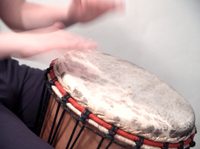 Ian Stevenson tabulated common features of Ruby and her past life persona, Karunasena. These include:
Ian Stevenson tabulated common features of Ruby and her past life persona, Karunasena. These include:
Both were interested in gardening and planting. Ian Stevenson noted he witnessed Ruby using a shovel type tool with unusual vigor.
Both liked to dance to drum music. When Ruby heard drum music, she would invite her brothers to sing and dance with her.
Both were interested in religion and in particular, Buddhism.
Both liked high quality clothes, with both preferring clothing worn by boys
Both were aggressive: Karunasena was known to be mischievous and he would get into physical fights with other boys. As noted, Ruby would use her fists to strike her brothers during arguments.
Both were very fond of Karunasena’s younger brother, Nandasena. When he would visit Ruby, she would hide Nandasena’s bicycle so that he would be forced to stay longer. Nandasena would typically stay 1 to 2 days with the Silva family.
Principles of Reincarnation: Understanding Past Lives
Gender Change with Gender Identity Issues: Though a girl, Ruby retained the mindset of a boy. A dramatic case in which gender change through reincarnation resulted in homosexuality can be reviewed at the following page:
A Male Japanese Soldier Reincarnates as a Girl and becomes a Lesbian
Past Life Phobia: Ruby had a fear of wells due to her death caused by falling into a well.
Past Life Talents and Behaviors: Ruby was skillful at playing games typically engaged in by boys. She was able to climb trees. She could wield a shovel type tool with the skill of an adult.
Relationships Renewed though Reincarnation: Ruby was reunited with her past life family.
Spirit Beings in Reincarnation Cases: Ruby reported events after Karunasena’s death, such as the family’s discussion of whether to take him to the hospital. As such, the soul of Karunasena/Ruby was able to observe events from the spirit world.
Source: Stevenson, Ian: Cases of the Reincarnation Type, Volume II, Ten Cases in Sri Lanka, University of Virginia Press, 1977, pages 163-202

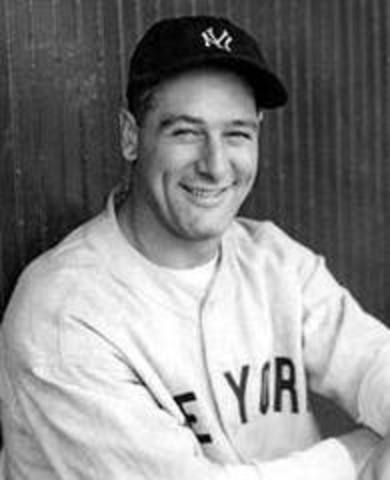
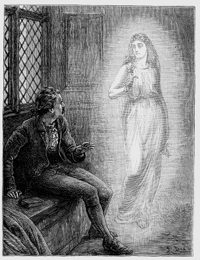

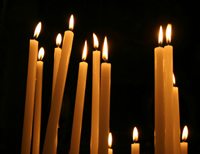


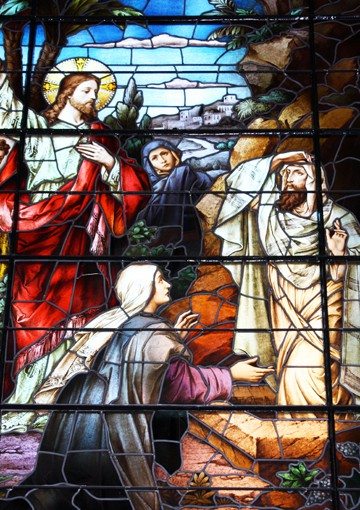

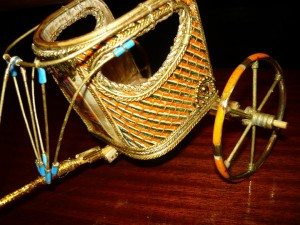
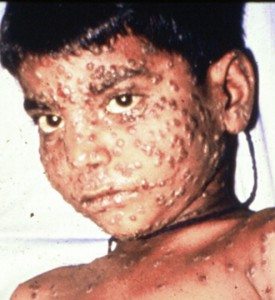
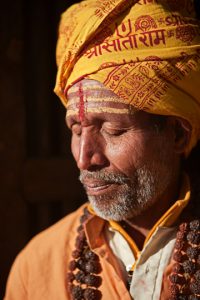


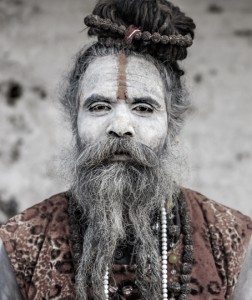
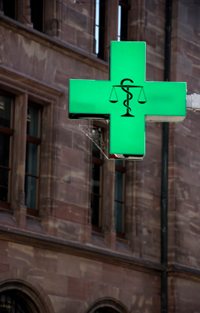

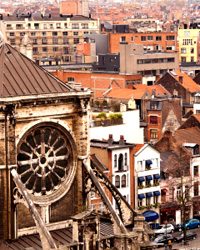



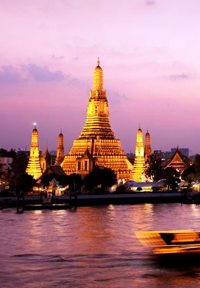




 How Derived:
How Derived: 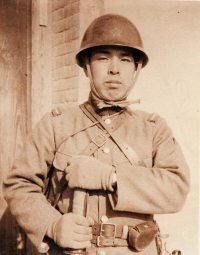 Reincarnation & Planning Lifetimes: Daw has an Announcing Dream involving the Japanese Soldier as a Spirit Being
Reincarnation & Planning Lifetimes: Daw has an Announcing Dream involving the Japanese Soldier as a Spirit Being A Child’s Past Life Memories: Ma says She misses Japan and her Family
A Child’s Past Life Memories: Ma says She misses Japan and her Family The US War Plane that Killed Ma in a Past Lifetime was a P-38 Lightning
The US War Plane that Killed Ma in a Past Lifetime was a P-38 Lightning Other reincarnation cases which demonstrate gender identity issues due to change of sex include:
Other reincarnation cases which demonstrate gender identity issues due to change of sex include: